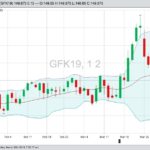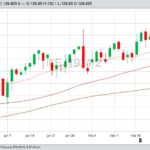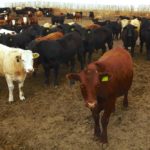Compared to last week, western Canadian yearling markets traded steady to $3 higher while calves were $4 lower to $5 higher depending on the region. Weakness in the live and feeder cattle futures contributed to the variable price structure; however, Alberta packers were buying fed cattle in the range of $268-$270 on a dressed basis, […] Read more

Klassen: Feeder market balancing many variables

Klassen: Feeder market incorporates risk premium following U.S. floods
Compared to the previous week, western Canadian feeder cattle sold steady to $4 higher the week ending March 23. Favourable spring weather enhanced demand for yearlings from major finishing operations; Lethbridge-area markets were notably $3-$5 higher as feedlots focused on local cattle. While feeding margins remain in negative territory, strength in the deferred live cattle […] Read more

Klassen: Feeder market holds value
Western Canadian feeder cattle prices were relatively unchanged compared to seven days earlier. Buying interest for yearlings was somewhat stronger while calves in the eastern Prairie regions were softer. Moderate temperatures are in the seven-day forecast for most of Western Canada, so the risk discount due to adverse weather has evaporated. Barley jumped an additional […] Read more

Klassen: Feeder market sends mixed signals
Compared to last week, western Canadian yearling markets were steady to $4 lower while calves were steady to $2 higher. Barley prices have jumped $3-$6 per tonne over the past week, with winter conditions hindering off-farm logistics. Alberta packers were buying fed cattle in the range of $149-$150 last week; however, in Nebraska, fed cattle […] Read more

Klassen: Feeder cattle succumb to negative margins
Alberta fed cattle prices have dropped nearly $15 over the past three weeks. Feedlot margins are deep in red ink, with losses amounting to $200-250 per head. Compared to last week, yearlings and calves over 700 lbs. traded $3-$5 lower; calves under 700 lbs. were down $5-$8 with some feeder markets in Alberta dropping as […] Read more

Klassen: Fed cattle weakness pressures yearlings
Compared to last week, western Canadian yearlings and calves over 700 lbs. traded steady to $3 lower on average. Weakness in the fed cattle market weighed on the heavier replacements. Alberta packers were buying fed cattle at $155 on a live basis, down $7 from the highs seven days earlier. Barley prices were up $3-$5 […] Read more

Klassen: Feeder market easily absorbs adverse weather
Western Canadian feeder markets were relatively unchanged from week-ago levels but there were a couple of unique characteristics in certain regions. Quality yearling packages were $2-$4 higher in Alberta but fleshier replacements were discounted. Eastern Prairie regions had grass cattle under 600 lbs. trading $3 to as much as $8 above week-ago levels. Order buyers […] Read more

Klassen: Fed cattle market lifts feeder prices
Compared to last week, western Canadian feeder cattle markets traded $4 on either side of unchanged. Early in the week, the market was rather sluggish but a fortuitous bounce in the live cattle futures quickly spilled over into the feeder complex. Yearlings and heavier calves ended the week $2 to $4 higher. Feeding margins are […] Read more

Klassen: Feeder market starts year with cautious tone
Western Canadian feeder cattle prices were relatively unchanged to slightly softer compared to mid-December. The market was lightly tested, with direct off farm to feedlot trade, but auction market activity was rather quiet. Winter conditions in southern Alberta caused buyers to be on the defensive, with lighter calves reflecting small discounts; however, vaccinated feeders on […] Read more

Klassen: Favourable margins support feeder market
There were no sales last week with auction barns closed for the holiday season; therefore, we start the year looking forward at factors that will influence the feeder market over the next month. While the feeder market was quiet, feedlot operators were surprised with the U.S. fed cattle market jumping US$3-$4 from seven days earlier. […] Read more

